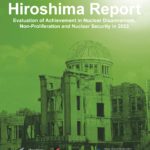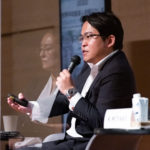(6) Transparency in the Peaceful Use of Nuclear Energy
A) Efforts for transparency
In addition to accepting IAEA full-scope safeguards, as described earlier, a state should aim to be fully transparent about its nuclear-related activities and future plans, in order to demonstrate that it has no intention of developing nuclear weapons. A state that concludes an Additional Protocol with the IAEA is obliged to provide information on its general plans for the next ten-year period relevant to any nuclear fuel cycle development (including nuclear fuel cycle-related research and development activities). Most countries actively promoting the peaceful use of nuclear energy have issued mid- or long-term nuclear development plans, including for the construction of nuclear power plants.113 The international community may be concerned about the possible development of nuclear weapon programs when states conduct nuclear activities without publishing their nuclear development plans (e.g., as with Israel, North Korea and Syria), or are engaged in nuclear activities which seem inconsistent with their plans (e.g., allegedly, Iran).
From the standpoint of transparency, communications received by the IAEA from certain member states concerning their policies regarding the management of plutonium, including the amount of plutonium held, are also important. Using the format of the Guidelines for the Management of Plutonium (INFCIRC/549) agreed upon in 1997, the five NWS plus Belgium, Germany, Japan and Switzerland annually publish data on the amount of civil unirradiated plutonium under their control. As of December 2020, China, Russia, the United Kingdom and the United States had not submitted reports declaring their civilian plutonium holdings for the previous year. France and Germany reported their holdings of not only civil plutonium but also HEU.
Japan’s report submitted to the IAEA was based on the annual report, titled “The Current Situation of Plutonium Management in Japan,” released on August 21 by the Japan Atomic Energy Commission (JAEC).114
Australia, Austria, Brazil, Canada, Chile, Egypt, Iran, Kazakhstan, South Korea, Mexico, the Netherlands, New Zealand, Nigeria, Norway, the Philippines, Poland, Saudi Arabia, South Africa, Sweden, Turkey and the UAE have either publicized the amount of their fissile material holdings, or at least have placed their declared nuclear material under IAEA safeguards. From this, it may be concluded that these states have shown clear evidence of transparency with regard to their civil nuclear activities.
B) Multilateral approaches to the fuel cycle
Several countries have sought to establish multilateral approaches to the fuel cycle, including nuclear fuel banks, as one way to dissuade NNWS from adopting indigenous enrichment technologies. Austria, Germany, Japan, Russia, the United Kingdom, the United States and the EU, as well as jointly six countries (France, Germany, the Netherlands, Russia, the United Kingdom and the United States), have made their respective proposals.
Among those proposals, nuclear fuel banks have made actual and concrete progress. Subsequent to the establishment of the International Uranium Enrichment Centre (IUEC) in Angarsk (Russia) and the American Assured Fuel Supply, the IAEA LEU Bank in Kazakhstan was inaugurated in August 2017. The IAEA LEU Bank was funded mainly by the Nuclear Threat Initiative (NTI), Kuwait, Norway, the UAE, the United States and the EU.115 It will store up to 90 tons of LEU—sufficient to run a 1,000 MW light-water reactor—in the form of uranium hexafluoride.116 This is the first fuel bank under the direct support of an international organization: the IAEA will bear the costs of purchase and delivery of LEU, and Kazakhstan will meet the cost of LEU storage.117 On October 17, 2019, the IAEA announced that the first LEU shipment, from France’s Orano Cycle, had been transported to Kazakhstan, a delivery which marked the official start of operation of the IAEA LEU Bank. In December, the IAEA received the second and final shipment of LEU.
113 The World Nuclear Association’s website (http://world- nuclear.org/) provides summaries of the current and future plans of civil nuclear programs around the world.
114 Office of Atomic Energy Policy Cabinet Office, “The Status of Plutonium Management in Japan—2019,” August 21, 2020, http://www.aec.go.jp/jicst/NC/iinkai/teirei/siryo2020/siryo24/200825e.pdf.
115 Approximately $150 million in funds were allocated for establishment and operation for the next 20 years.
116 In NTI’s original proposal for a nuclear fuel bank, one of the conditions for providing fuel was that the country must have renounce the possession of facilities related to nuclear fuel cycle. However, such a condition was not included for neither the Russian center nor the Kazakhstan fuel bank.
117 “Kazakhstan Signs IAEA ‘Fuel Bank’ Agreement,” World Nuclear News, May 14, 2015, http://worldnuclear-news.org/UF-Kazakhstan-signs-IAEA-fuel-bank-agreement-14051502.html.







